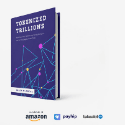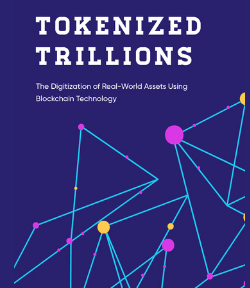
Why Bitcoin, Gold, and the Dollar Are on a Collision Course
Markets aren’t just about earnings or growth anymore. They are about credit. They are about the flow of
Markets aren’t just about earnings or growth anymore. They are about credit. They are about the flow of liquidity through a system so overstretched that every policy decision – whether from the Fed, the Treasury, or Beijing – ripples through global assets in real time. And the uncomfortable truth? We’ve built a financial architecture that only survives if it keeps printing.
For decades, the story was the same: deficits didn’t matter, debt could always be rolled, and inflation was “under control.” That illusion shattered in 2008 and again in 2020. The pattern is clear: each crisis forces a bigger balance sheet expansion, each expansion distorts markets further, and each distortion brings us closer to a reckoning.
The Dollar’s Paradox
The dollar sits at the center of this storm. On one hand, a liquidity crunch almost always creates demand for dollars. In a deflationary bust, the greenback becomes the world’s wrecking ball, squeezing emerging markets and even precious metals. Some argue we may yet see another surge to DXY 120 before the system resets.
On the other hand, the dollar is also the weakest link. U.S. debt-to-GDP now sits above 120%, interest costs are larger than defense spending, and foreign buyers from BRICS to the Gulf are quietly diversifying into gold and, increasingly, Bitcoin. For the first time in nearly 30 years, foreign central banks hold more gold than Treasuries. That isn’t a footnote – it’s a regime shift.
So the fork is clear: either the dollar rallies one last time in a global scramble for liquidity, crushing risk assets temporarily, or confidence breaks, capital flees, and fiat debasement accelerates. Either way, hard money wins in the long arc.
The Silent Remonetization of Gold and Silver
Behind the headlines, a silent revolution is underway. Gold has surged past $3,600 an ounce, silver has breached $40, and billion-dollar trades are hitting the GLD ETFs Central banks are building new vaults across Asia and the Middle East, signaling that the monetary map is being redrawn.
And here’s the kicker: for the first time in modern history, the U.S. has reclassified silver as a strategic metal. That may look bureaucratic, but in reality it’s a national security admission. Silver underpins everything from missiles to solar panels to AI chips. If Washington is scrambling to secure it, the game has changed.
The deeper shift is structural: the pricing of metals is moving away from paper promises toward physical demand. Futures and swaps can suppress prices for a while, but when sovereigns demand delivery in Shanghai or Riyadh, no algorithm can conjure up ounces that don’t exist.
Bitcoin: The Asymptotic Trade
Then there’s Bitcoin. Strip away the noise, the memes, the ETF flows – and the case is brutally simple. Bitcoin is a fixed-supply asset in a world where every fiat currency must expand. Unlike equities, it doesn’t need earnings growth. Unlike housing, it doesn’t need demographics. It just needs one thing: more money in the system.
Since 2009, priced in gold, the S&P 500 hasn’t recovered pre-crisis highs. Housing remains underwater. Tech stocks, the crown jewel of U.S. capitalism, look pedestrian when priced in Bitcoin. Against this backdrop, Bitcoin isn’t speculative – it’s the purest expression of the debasement trade.
If governments are gearing up for another round of fiscal populism, defense buildouts, and handouts – whether in Washington, Beijing, or Brussels – then liquidity will flow. And Bitcoin, the faster horse, will run ahead of everything else. Targets of $150,000 to $200,000 may sound wild, but they’re just math in a system where supply is fixed and fiat printing is infinite.
The New Credit Alchemy
This doesn’t just play out in sovereign balance sheets. Inside crypto itself, we’re watching a new form of corporate finance emerge. Exchanges like Hyperliquid are positioning to rival Binance. Firms are emulating MicroStrategy – using equity and debt issuance to accumulate Bitcoin and package it as “equity proxies” for institutions that can’t hold spot BTC.
At the top of cycles, this financial alchemy looks brilliant. At the bottom, it implodes – just as FTX and BlockFi collapsed not at the highs, but at the depths of despair. Expect the same pattern again: spectacular gains on the way up, spectacular failures when liquidity turns.
The Six-Month Window
So where does that leave us heading into the next six months? Caught between two inevitabilities: the need to print and the consequences of printing. Rate cuts are coming. Liquidity engines – from Wells Fargo’s freshly unshackled $500 billion balance sheet capacity to sovereign wealth funds partnering with Washington – are warming up. This tide will lift equities, commodities, and crypto alike.
But every tide recedes. When it does, we face the possibility of a dollar squeeze, a debt doom loop, or an outright loss of confidence in fiat. That’s the macro fork ahead.
The smartest takeaway isn’t to pick sides in the dollar vs. debasement debate. It’s to recognize that both paths converge on the same outcome: fiat dilution and the rise of hard money. Gold, silver, and especially Bitcoin aren’t just trades anymore. They’re the core of a new financial order slowly displacing the old one.






